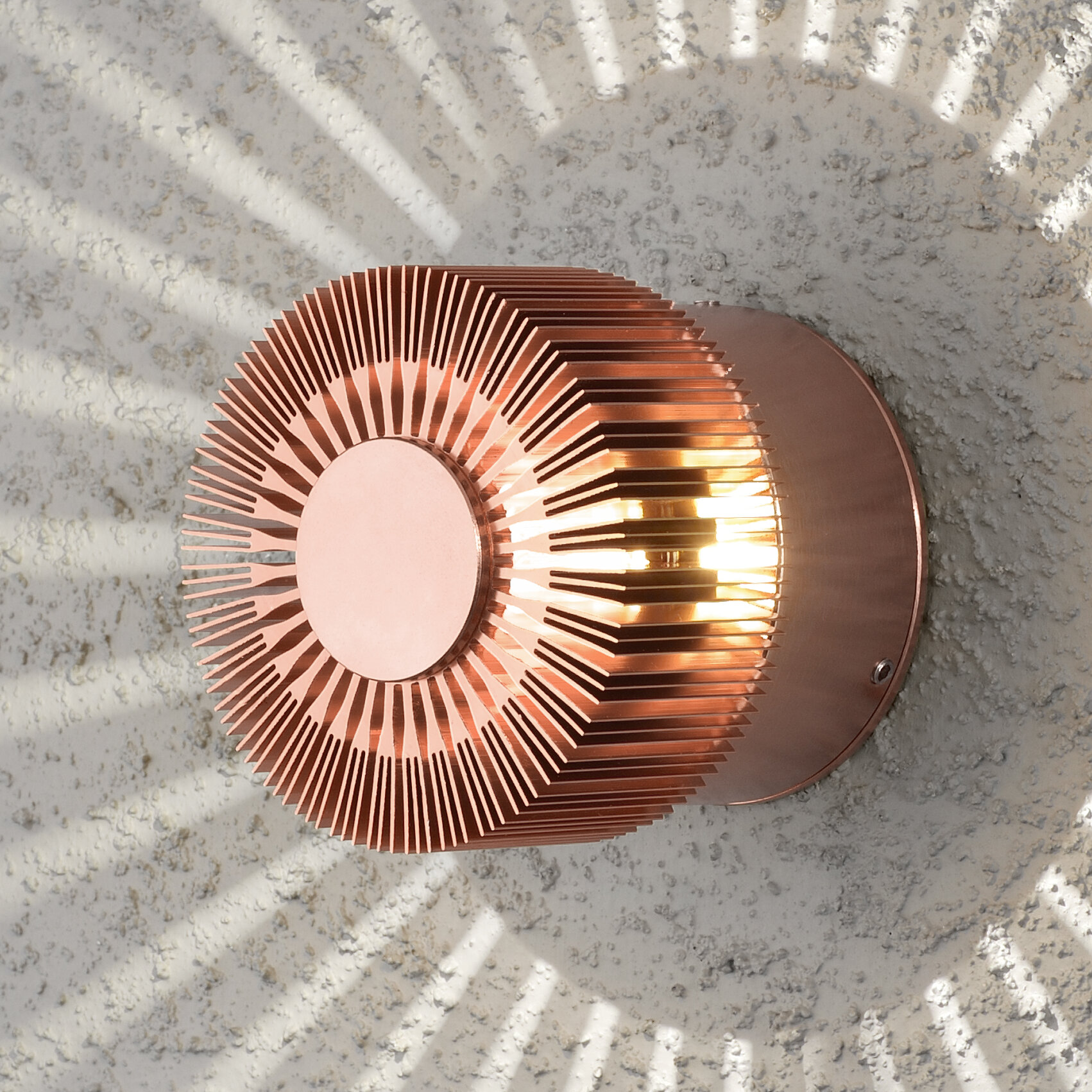Experts reveal the secrets to getting a great outdoor lighting scheme with these illuminating garden lighting ideas
Inject an ambient glow to your garden after the sun goes down with these 12 garden lighting ideas from landscaping and lighting design experts
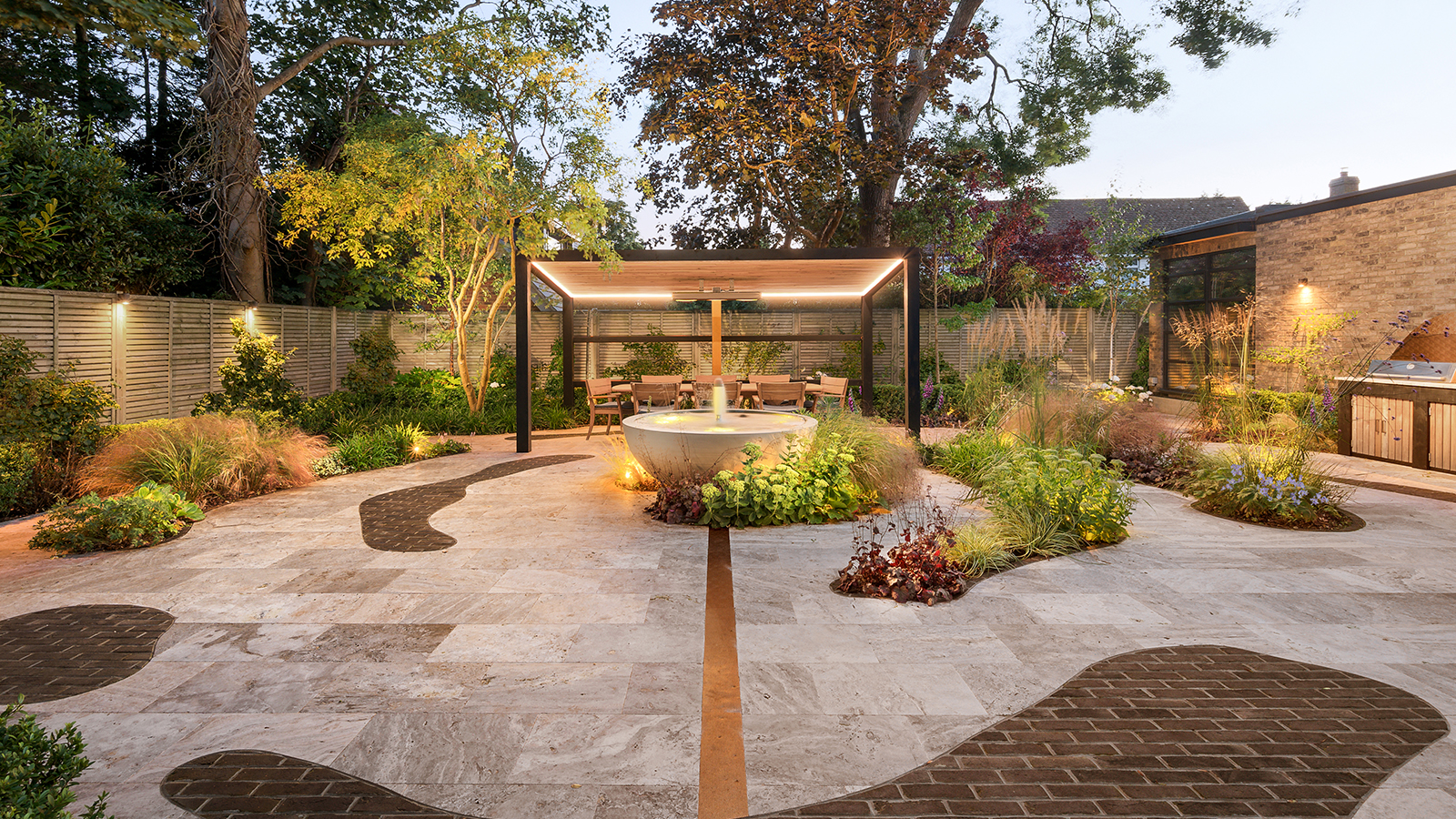
An outdoor space without garden lighting ideas is one that shuts off to the world when the sun goes down, only to return to our consciousness when the following day starts anew. Add light to the mix and you give your garden two lives. Its daytime state, full of colour and life, and its dark alter-ego — a rich milieu of lively shadows and exciting possibilities.
Lighting is a key ingredient for unlocking even more time that can be spent outdoors and increased usability enhances the appeal and value of our homes. Though we might not have the consistent weather of the continent, the emergence of the ‘fifth room’ concept around the lockdown era – when greater importance was placed on our outdoor living areas – we began to see our gardens as a vital component of our home, rather than just a nice add-on.
Therefore, anything that facilitates greater usability is seen as a crucial element of garden design. As any landscape designer will tell you, when used correctly, lights can transform how you use your space as well as adding a new dimension to your outdoor design elements.
Garden lighting ideas: 12 sophisticated schemes for your outdoor space
One of the beauties of planning your garden lighting ideas is the range of products available. This makes it easy to incorporate light, but doing it in a way that gives the best results requires a little help from lighting experts and landscape designers.
For instance, how much light do we need, where we should be using it and what are the key practical considerations for a healthy garden glow?
1. Utilise the darkness when adding lights
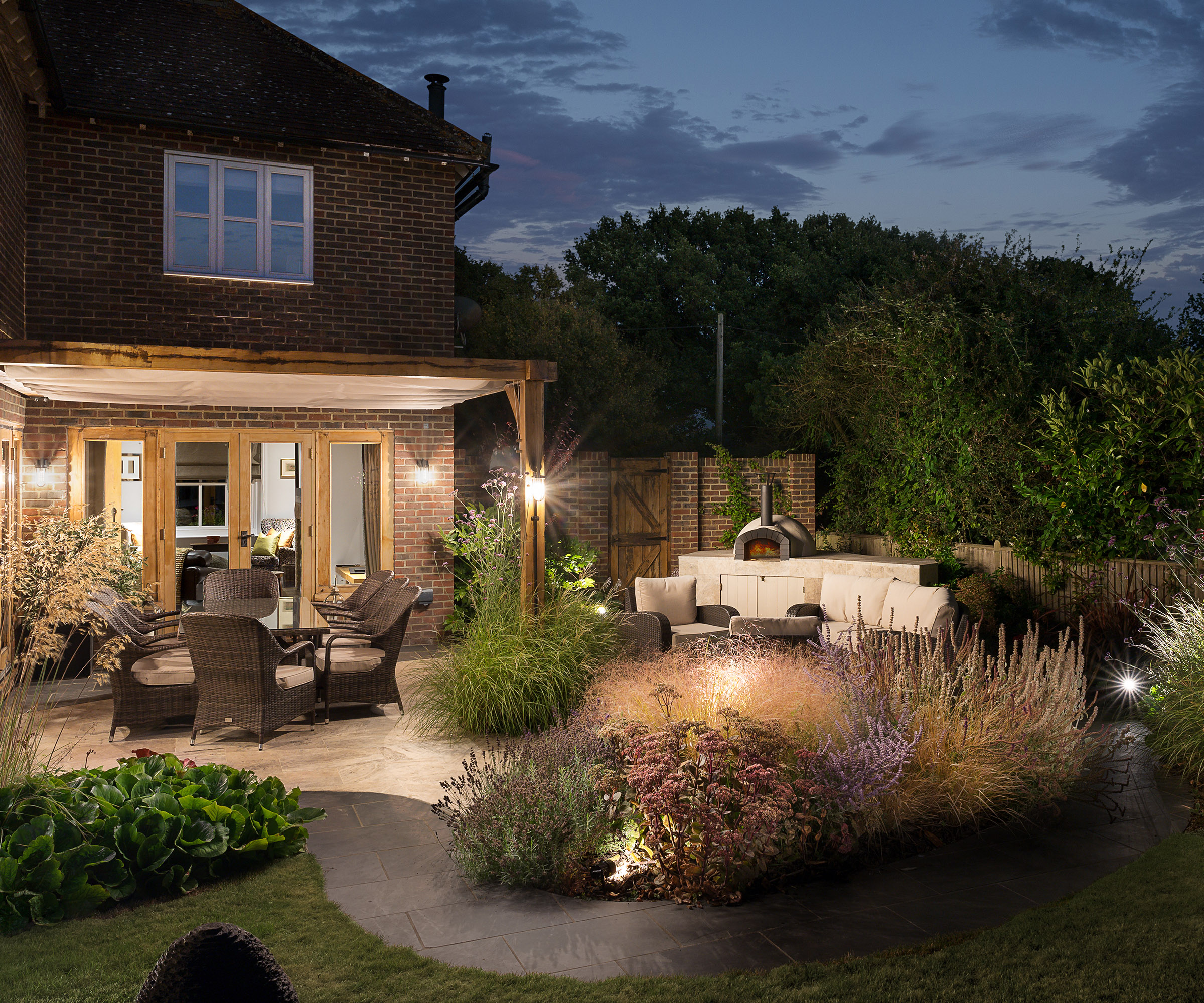
One of the keys to good garden and patio lighting is to think about how light and dark play together. “Avoid putting in too much lighting so the garden doesn’t end up looking like a theme park,” advises Francesa Sideris of Langlea Garden Design and Construction.
“Break down the lighting of your garden into key elements — paths, steps, sculpture, trees, walls, water and features,” says Luke Thomas, design director of John Cullen Lighting. Do not be afraid of darkness as this plays an important part in a well-lit garden. Understanding the balance of light and shadow is a magical component in all lighting design.
“Select key focal points to be lit — ideally choose features that look good whatever the season,” says Luke. “Sometimes these features can be surrounded by darkness and in other situations, light-linking elements are used. These focal points could be sculptures, pavilions or trees.
"Evergreen trees are best for year-round focus, but some deciduous varieties can look pleasingly sculptural, even after they have shed their leaves in winter.”

Francesa is highly qualified in horticulture, garden design and landscape architecture, and uses her background to conceptualise and deliver striking and contemporary gardens.
2. Opt for a less is more approach
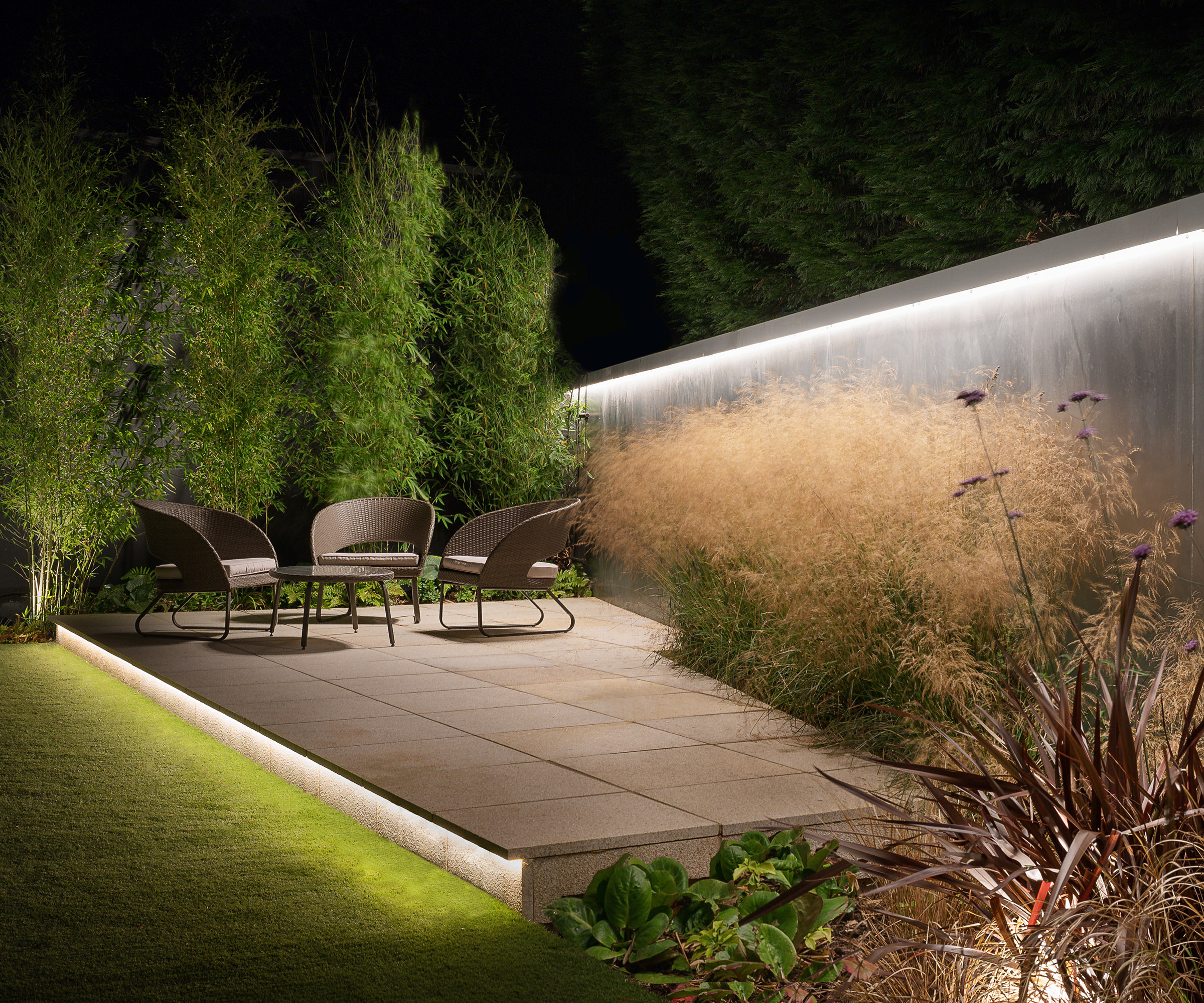
“The addition of light to any garden creates a magical extra room at night and adds a wonderful new perspective as dusk falls, whether summer or winter,” says Luke Thomas.
But a little goes a long way and when you buy patio lighting it’s important to remember, the purpose of night lighting is not to recreate day. “Less is often more when it comes to garden lighting,” explains Francesca Sideris.
“Establish the right balance between making the garden practical and usable for your family in the evenings, with a relaxing ambience. If you flood your garden with too much light, you run the risk of it looking it looking too loud and ostentatious,” she says.
3. Choose spotlights for plant beds
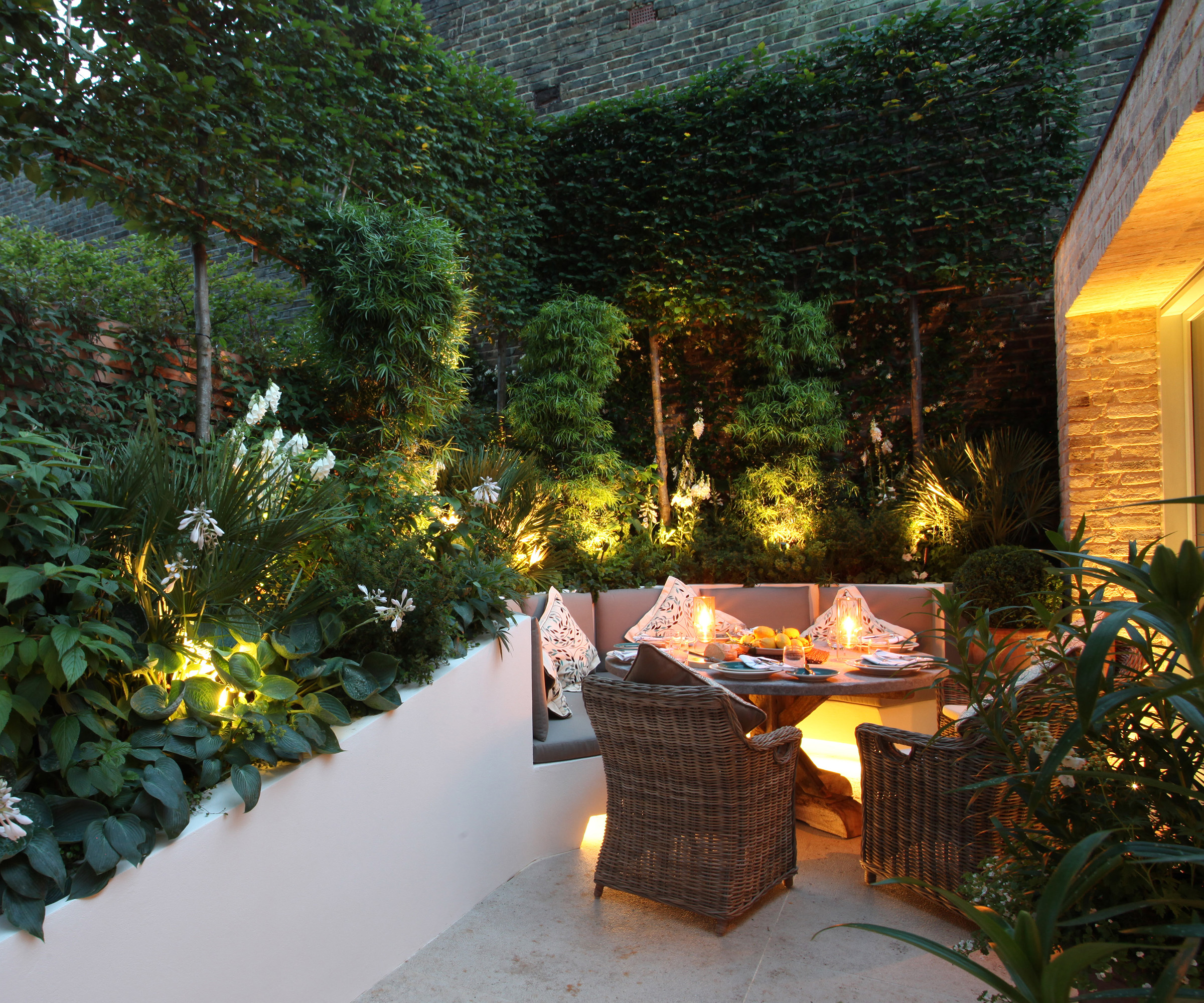
Directional lighting has a lot to offer in a garden landscaping scheme. Uplighters located at ground level or in raised beds can be used to illuminate trees and planting, creating bursts of light and drawing the eye around the garden at night time.
“Create a wash of light to the surrounding planting to show off the colours and flowers when it gets dark,” says Luke Thomas.
“This is best achieved with a selection of spiked LED lights which can be repositioned as the planting grows. Consider products such as the Kew spotlights for taller more structured planting or Hampton floodlights for a wash of light for the front of flower beds or paths.”
Shop garden lighting
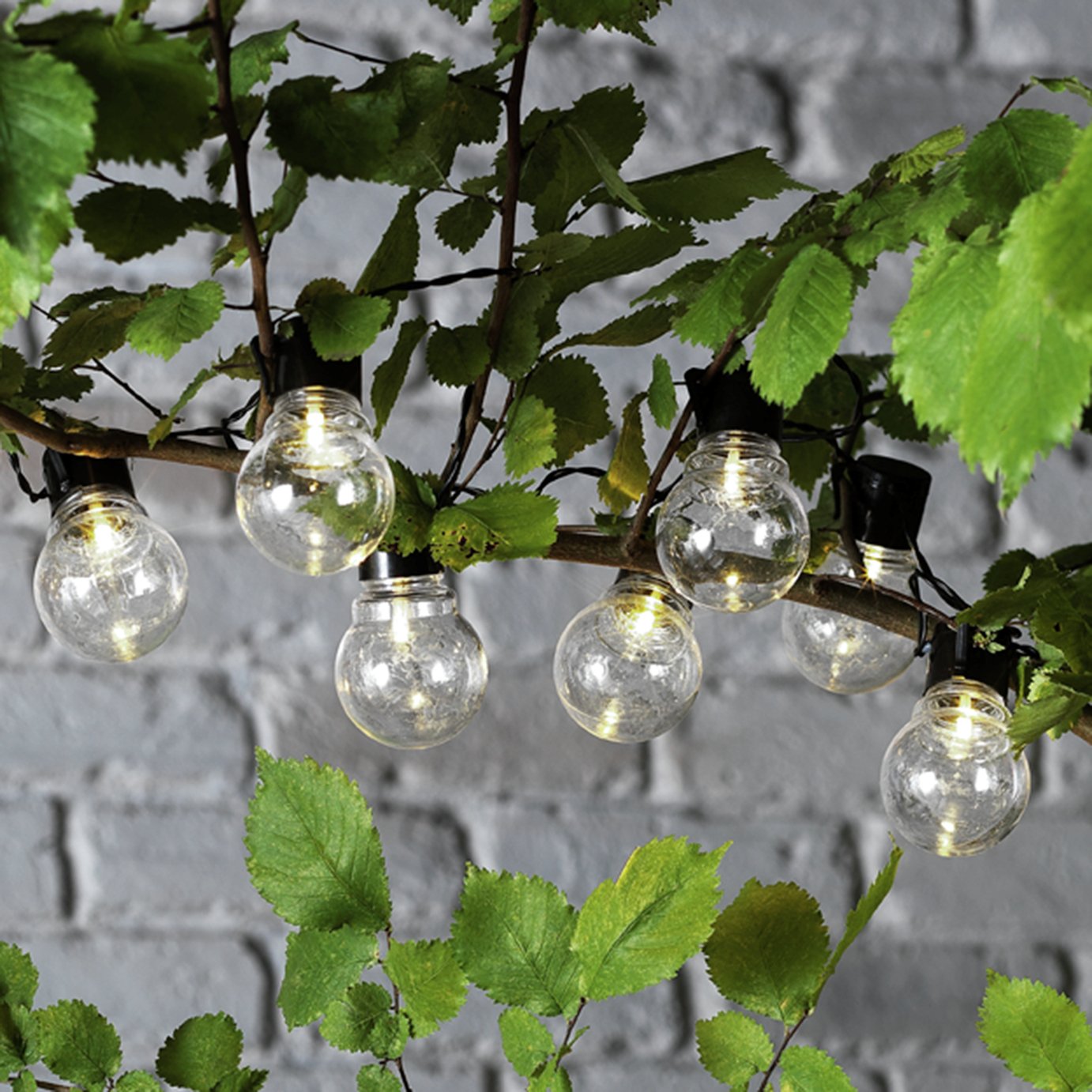
Solar festoon lights are a cheap and easy way to add a warm ambience to your patio.

Luke has been in the lighting industry since 2008 and heads up the UK design team. Working collaboratively with top designers, architects, contractors and clients, Luke has been involved in a wide range of projects offering design-led solutions which improve our experience of spaces.
4. Consider built-in lighting
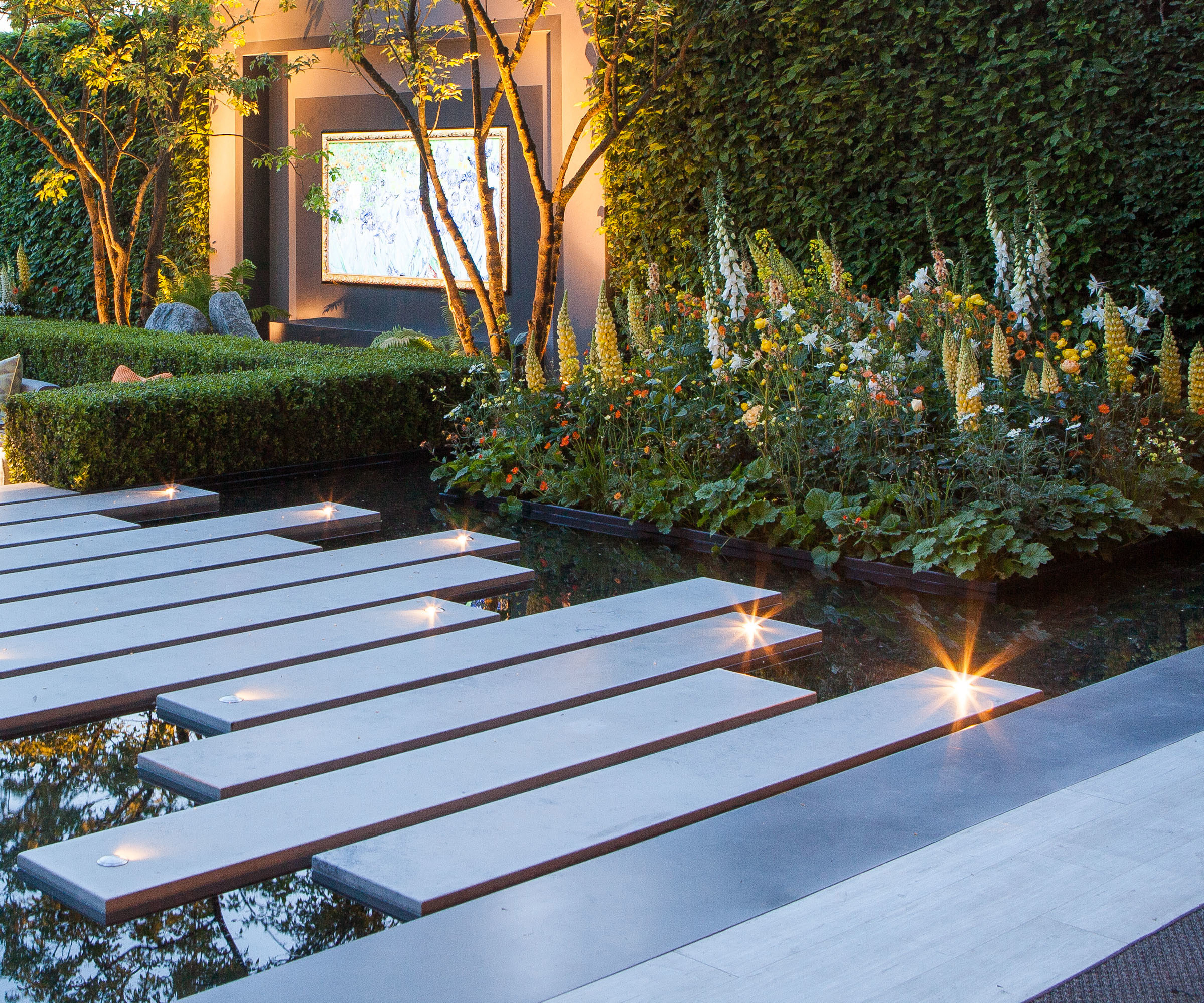
Built-in lighting can offer a sleek and seamless look, particularly for outdoor spaces like decking, patios, or steps. However, they will require planning and complex installation compared to standalone light fittings.
Built-in lights may be a good option for small gardens as they are generally unobtrusive and integrate into existing features without stealing away valuable space. This Guida light by John Cullen Lighting is an exterior in-ground LED indicator light that produces a low glare across the ground for a subtle effect.
5. Choose the right light for the right place
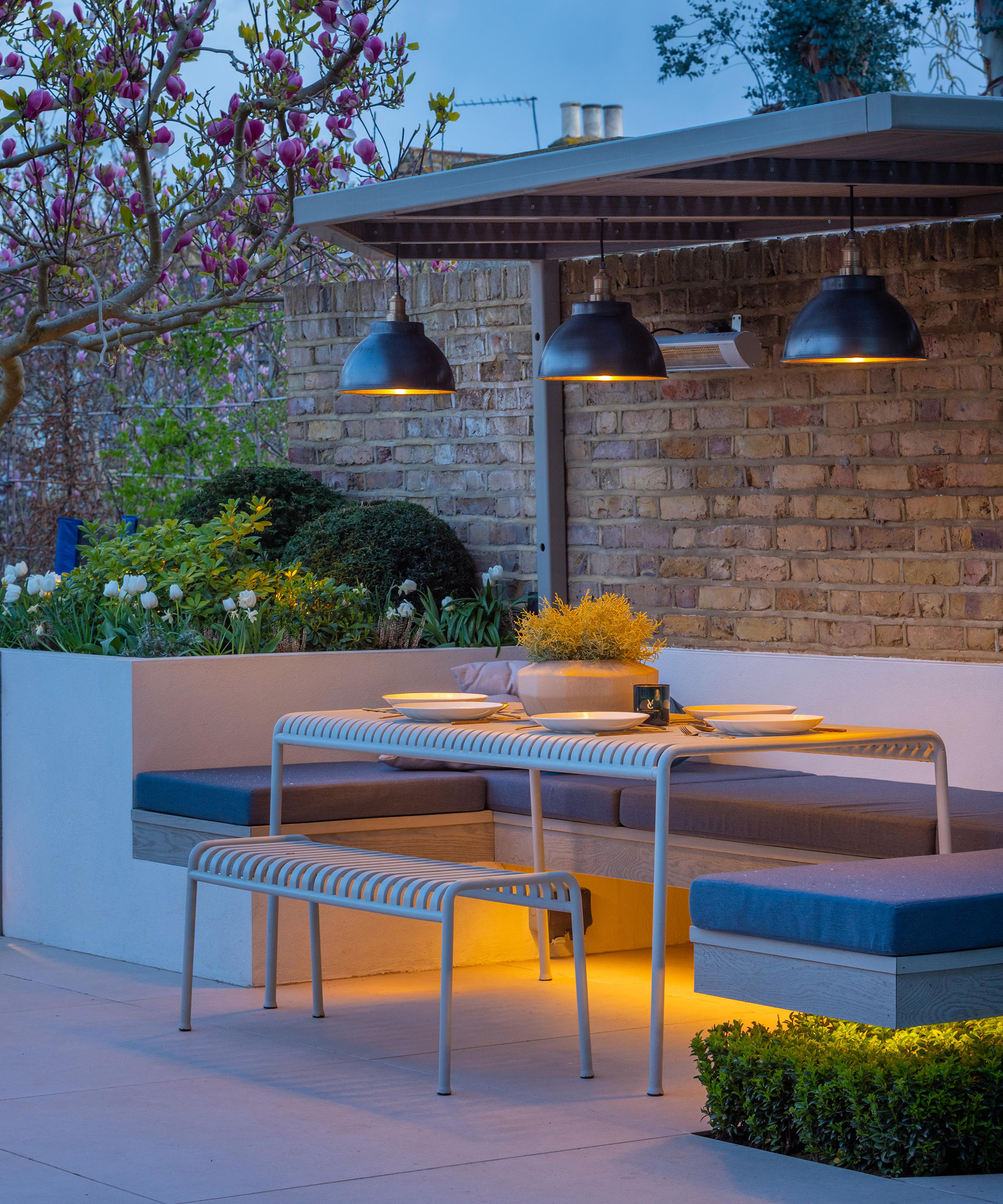
“Carefully consider the placement of your lighting as this will determine the design as well as the IP rating you will require,” advises Jo Plant, Head of Design at Pooky.
“Exposed walls are better suited to sturdy outdoor wall lights, but for a more decorative feel on a patio or under a pergola, we recommend using lanterns, which will help create the perfect atmosphere. You should use IP44 damp-rated fixtures for sheltered spaces. For the more exposed areas where there could be direct or indirect contact with rain, you will need to use IP65 wet-rated fixtures.”
“Apart from functionality, aesthetic is key, opt for materials that are not only robust but eye-catching, too. Brass and chrome always age well outside and on a bright day, they beautifully catch the sun,” says Jo.
6. Have garden lighting on different circuits
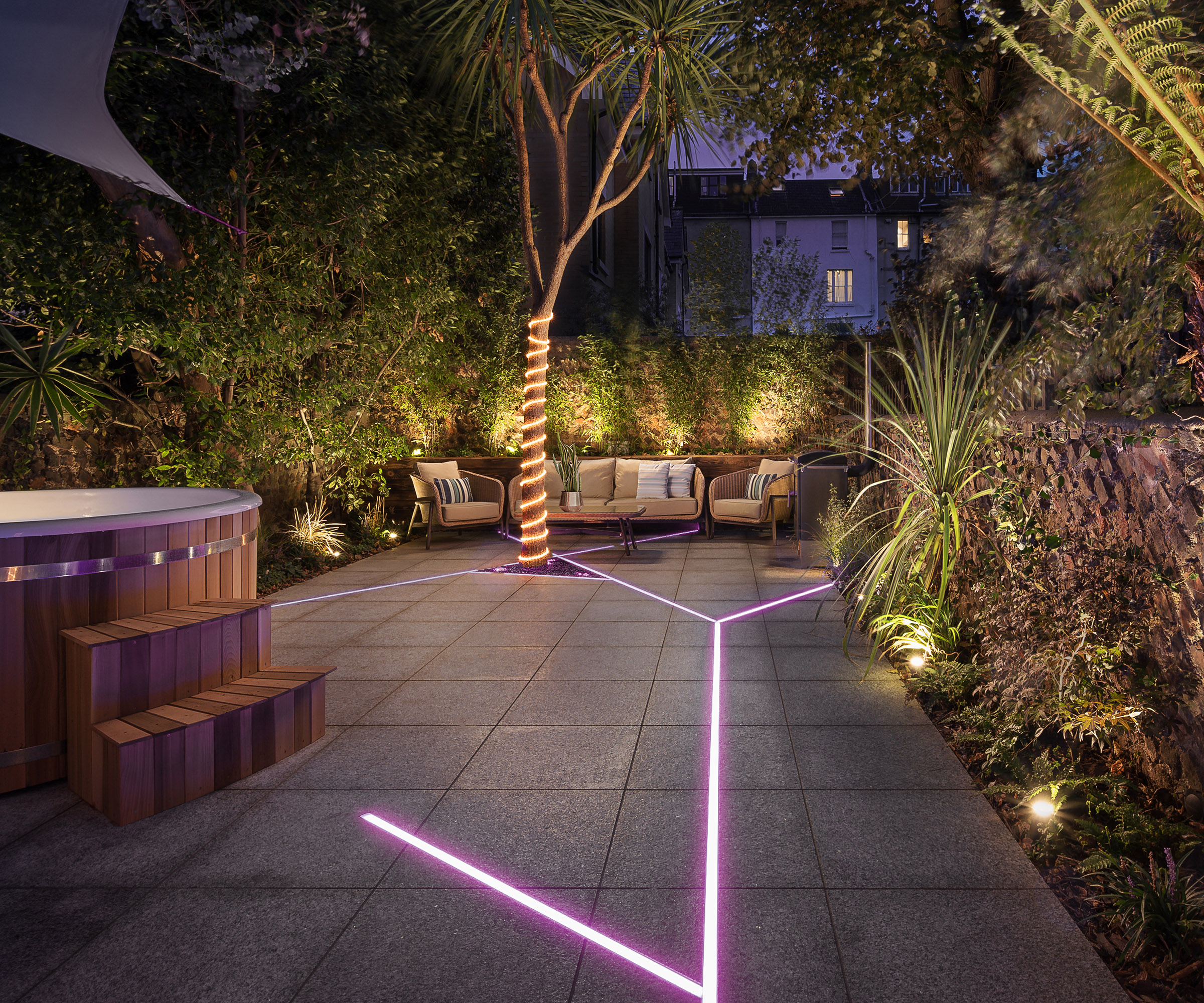
You wouldn’t have all your living room lights come on and off with the flick of a single switch in your home, so there’s no reason to do this outdoors, either. “Create different circuits so you can tailor your scenes to the lifestyle and extend the viewpoint with a pleasingly lit seating or socialising area,” says Luke.
“To maximise the elegant outdoor living space, use a sophisticated control system with scene setting to balance outdoor and indoor lighting levels.”
“Consider combining several types of lighting to create a layered look that addresses all the functions you need and also the atmosphere or mood you want to set,” says Francesca Sideris.
7. Explore tech solutions for your outdoor lighting ideas
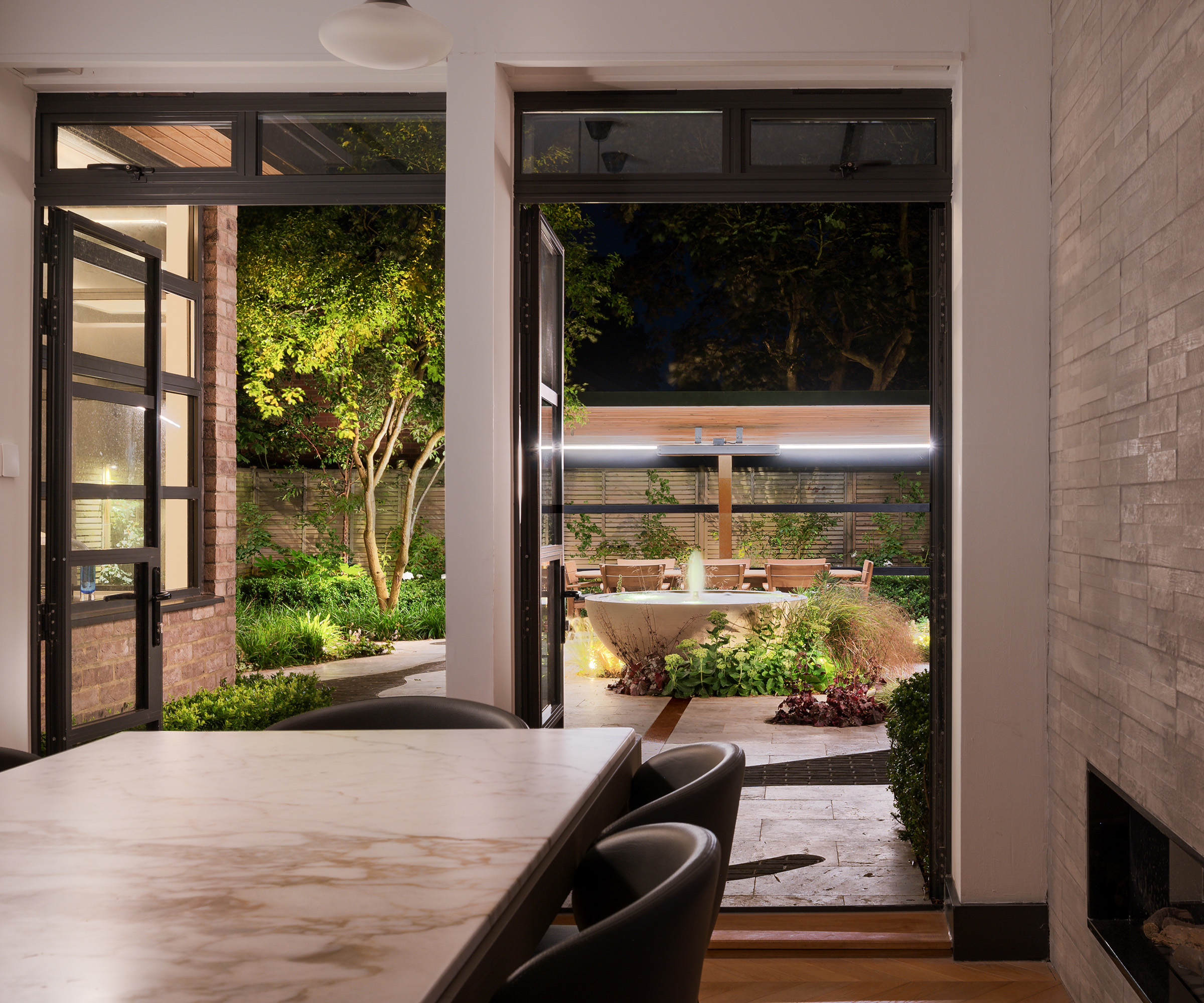
Lighting tech goes beyond motion-activated sensors and timers. “It’s quite common now to have your lighting scheme linked to your phone via an app, so even if you are sitting inside and admiring the garden through your doors or windows you should be able to set the mood you want,” says Francesca Sideris.
“Some lighting options come with remotes that are particularly handy for deck lighting or lighting features at the far end of the garden,” says Matthew Currington, technical director,
The Lighting Superstore.
8. Illuminate your garden path with lighting
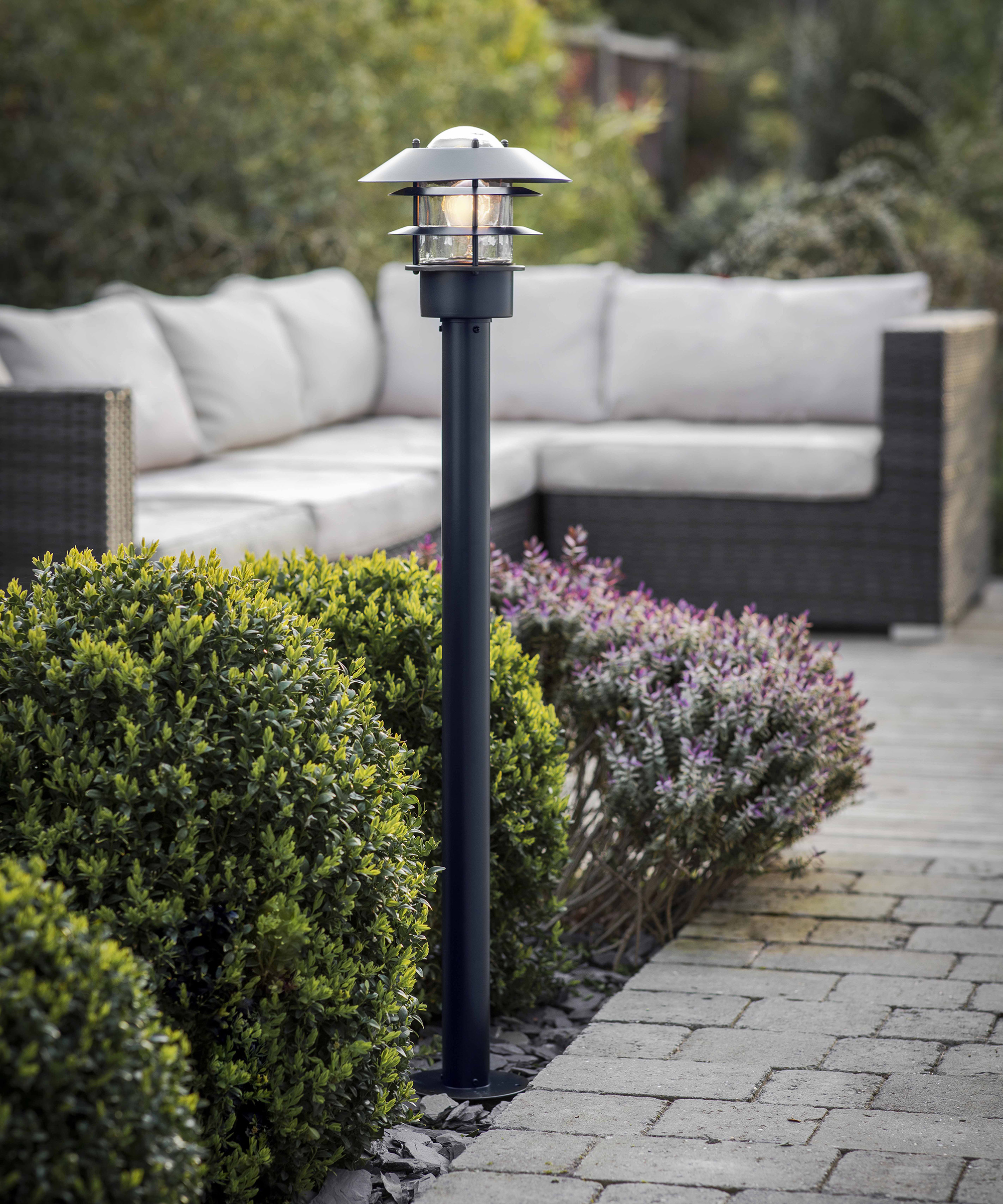
Garden paths can prove hazards in the winter months thanks to dark and slippery conditions. Including lighting along your path, both looks great and makes your garden more usable at night.
You have a few options to explore design-wise when making your choice. Downlighters can be used sporadically along the path to brighten it up underfoot, while border lights bring a more dramatic look to your garden.
Garden path lighting only needs a soft glow to mark the outline and illuminate a small section rather than the full floodlight treatment, so solar-powered lighting can be an effective choice which requires minimal disruption to install.
9. Add drama with a garden pendant light
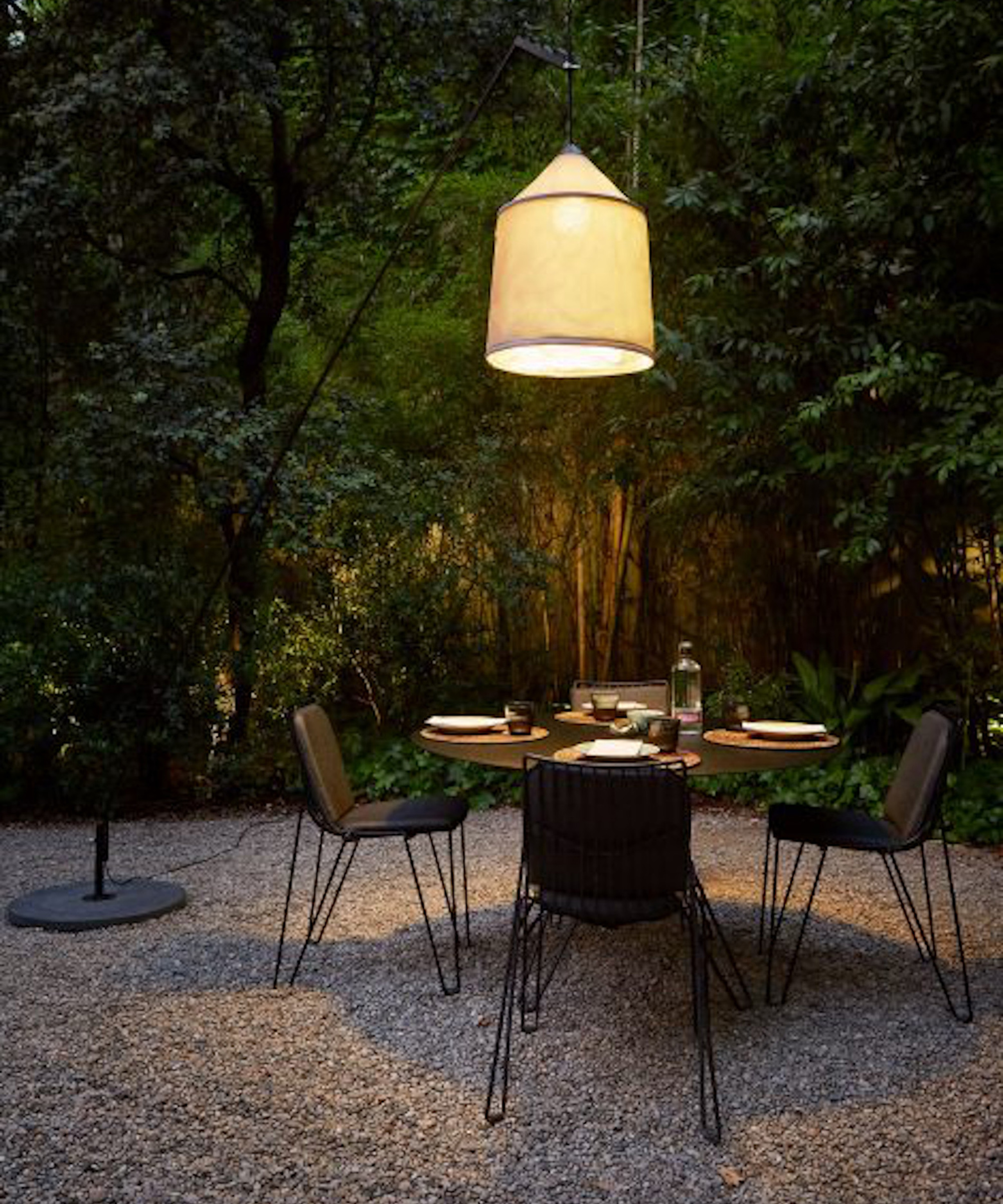
Gardens are more and more becoming outside living spaces, while the boundaries between indoors and outdoors are also becoming more blurred. This has led to a trend for garden pendant lights.
Of course, these aren’t your everyday pendant lights. They need to be specialist designs that carry the appropriate IP (ingress protection) for use outdoors, which is IP44 or above.
You’ll need to create a structure from which your pendant light can hang in most cases. Your home may have a covered outdoor area which would work perfectly, or you could tie in a pendant light to a structure like a pergola or outbuilding.
10. Design lighting for your garden’s water feature
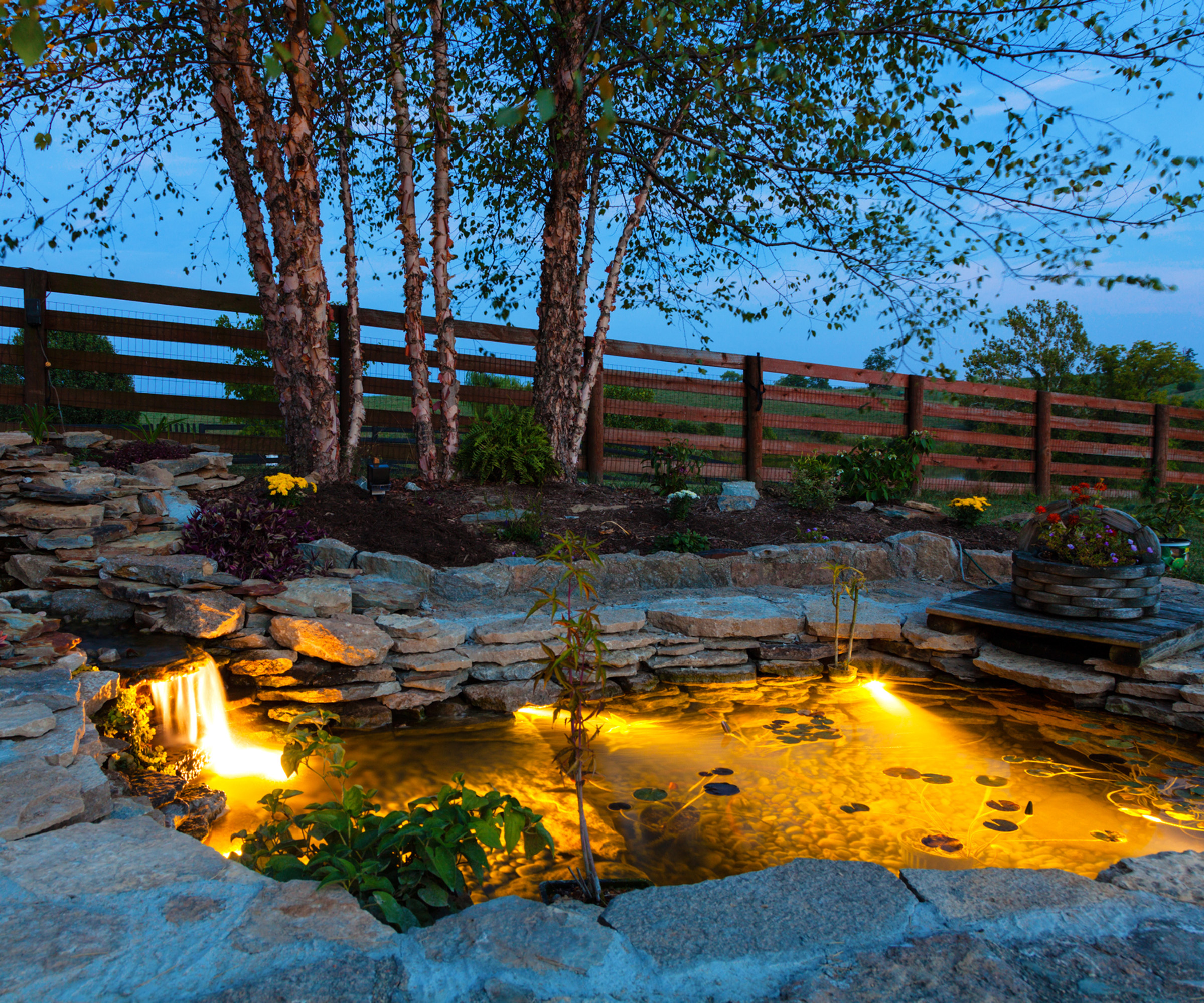
Adding lighting to a water feature or pond is beneficial for a few reasons. Ponds, in particular, can pose potential safety hazards at the best of times, but especially at night when visibility is reduced. Lighting will help highlight any water in your garden for anyone less familiar with the orientation of your outdoor space.
Aesthetically, designing your lighting to illuminate running water can add an extra dimension and add a sense of movement to your garden design at night. "This is about bringing an extra dimension to moving water at night where light can be passed through it or over it, giving a sense of drama that cannot be achieved during daylight hours," says award-winning garden designer Paul Hervey-Brookes.
11. Create ambience with sociable lighting
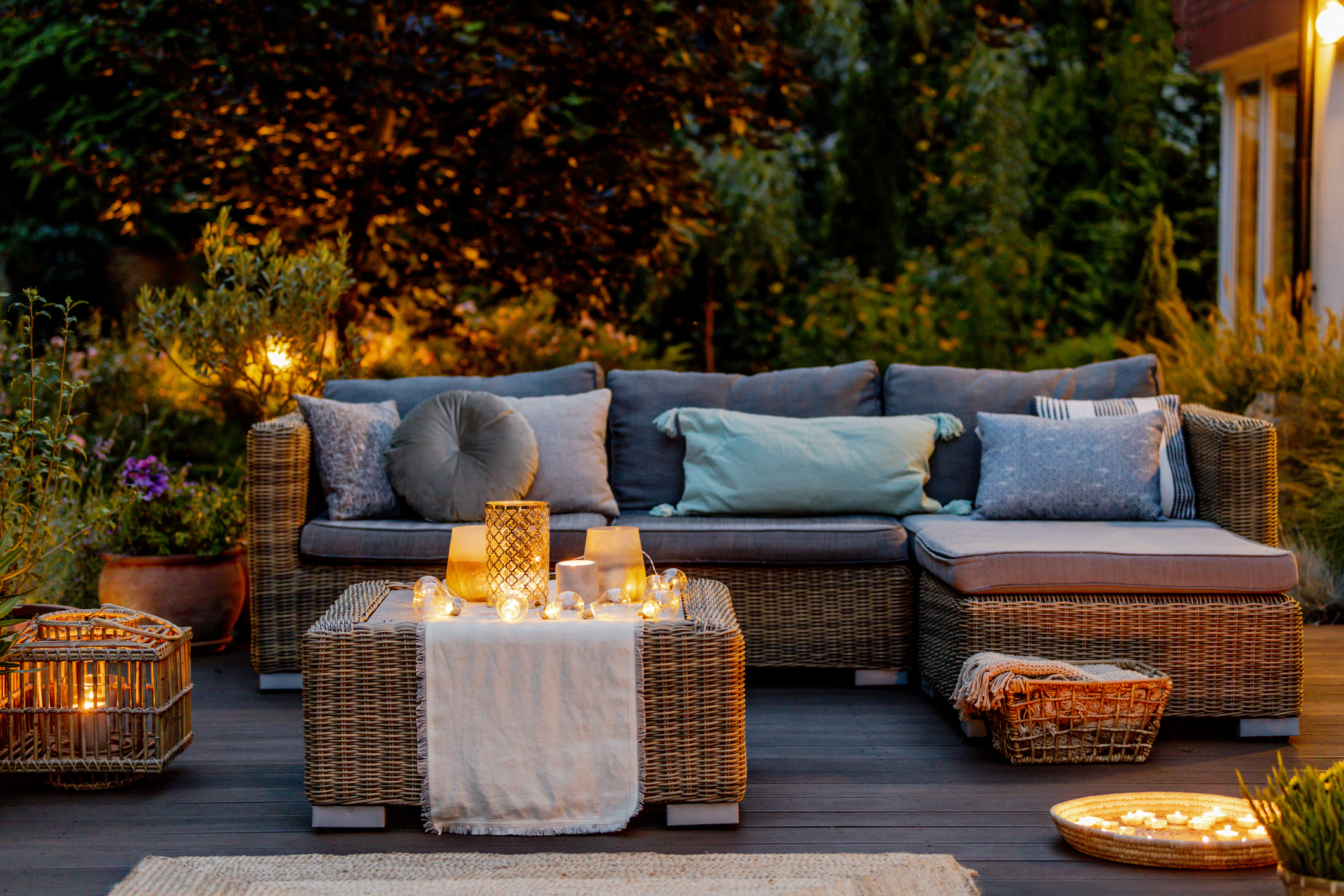
When considering your garden as a social space, think holistically about your garden’s lighting requirements. While lighting hardwired into the landscape is effective, consider softer, more ambient lighting from candles, festoon lights and even an outdoor log burner to add to the mix of your lighting scheme.
Think about the feeling you want to create when choosing the luminosity of your garden lighting too. “Select a warm white tone of light fittings to match the greens in your garden,” advises Luke Thomas.
“Anything cooler than 3,000 kelvins or higher can make a garden feel ghostly at night. Consider instead warm white 2,700 kelvin fittings for a soft welcoming look.”
12. Light up an outdoor structure
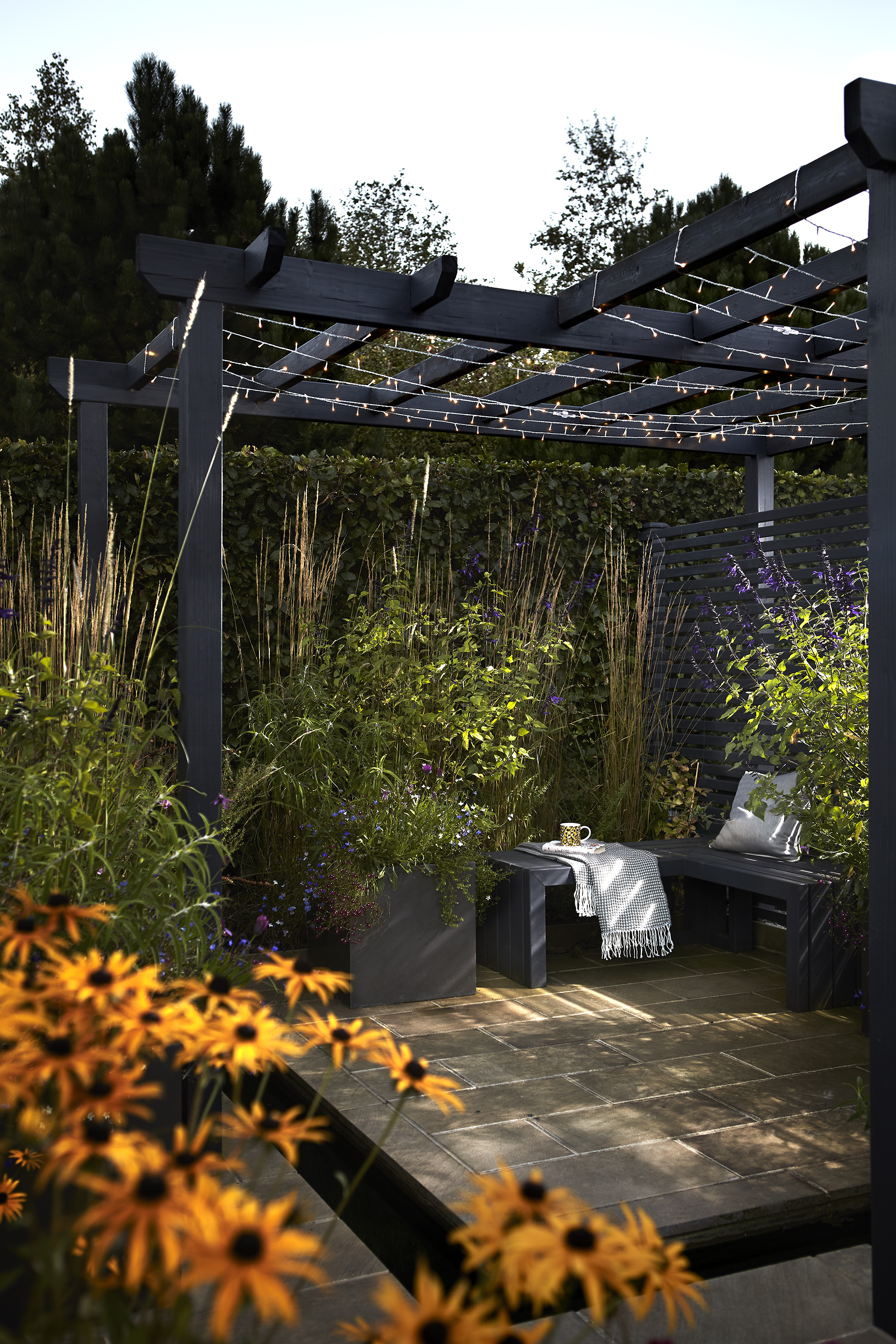
Whether it's a pergola, a shed or a garden office, use accent lighting in your garden to make a feature of a structural form. This, along with uplighting the right trees, will make sure that your garden lighting ideas are in levels from the ground to the top of your boundary walls or fences, avoiding your lighting scheme looking too bottom-heavy.
"Lighting that is used to illuminate terraces, garden buildings and the entrance is always more significant from a design point of view and should relate to the overall design intentions or the vernacular architecture," adds garden designer Paul Hervey-Brookes
FAQ
How can I light my garden cheaply?
The least expensive option for garden lighting has to be solar products. Not only are garden solar lights less expensive, but they’re less disruptive to install in an existing garden scheme, saving you installation costs.
While solar power lights (or those using rechargeable batteries) won’t offer the same power as mains-powered lights, they can be used to add fun and interest, especially when entertaining, with the added benefit that they can be moved to suit your specific needs for any given evening.
However, there are some things you should consider before investing. Landscape designer Paul Hervey-Brookes cautions: “Novelty lights tend to have very short lifespans and are largely made of plastic. The light levels will dim with time and they tend to wear out from year-round exposure much faster than traditionally wired and mounted light units.”
Want an easy way to add atmosphere to your garden? Festoon lights are the perfect garden lighting idea for those who want to add something cost-effective to their outdoor space. They can be mains- or battery-powered giving you great versatility, and come in all sorts of lengths to suit everything from the largest outdoor spaces to the most compact gardens.
A design using lighting to emphasise garden steps not only looks great but may help prevent trips and falls during night-time excursions into the garden. For more inspiration on how to smarten up your steps and have a look at our garden step ideas.
Get the Homebuilding & Renovating Newsletter
Bring your dream home to life with expert advice, how to guides and design inspiration. Sign up for our newsletter and get two free tickets to a Homebuilding & Renovating Show near you.

Teresa was part of a team that launched Easy Gardens in 2018 and worked as the Editor on this magazine. She has extensive experience writing and editing content on gardens and landscaping on brands such as Homes & Gardens, Country Homes & Interiors and Living Etc magazine. She has developed close working relationships with top landscape architects and leading industry experts, and has been exposed to an array of rich content and expertise.
In 2020 Teresa bought her first home. She and her partner worked alongside architects and builders to transform the downstairs area of her two bedroom Victorian house in north London into a usable space for her family. Along the way she learned the stresses, woes and joys of home renovation, and is now looking to her next project, landscaping the back garden.
